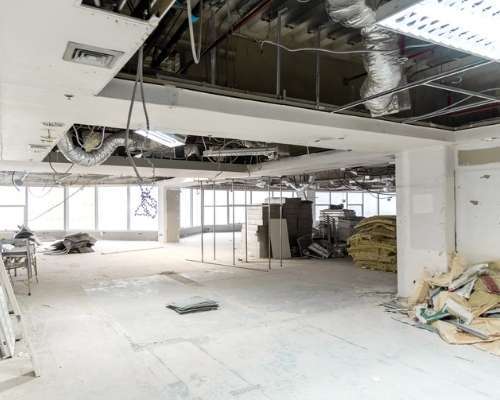3 Minute Read
November 16, 2020
0%

With Covid-19 continuing to plunder communities across the nation and the world, it will likely continue to force residential, non residential and non building construction to be slower than in year’s past; however, a recovery is projected to start in 2022 or 2023 as cities and towns gain access to a vaccine. In contrast to the last recession in 2008, the current recession should be shorter and have less of a specific impact on construction.
“In 2008, the driving force behind the recession hit much closer to home for the construction industry. Now we’re dealing with a much more generalized Covid-19 threat, and the domino impact it's having is significant, but it’s not as focused on the construction industry as the last recession was,” noted webinar moderator Wayne Newitts.
Covid-19 has led many people to want to shift from multi-family housing to single-family housing as they search for more space, so we’re likely going to see a lot more development in the suburbs and a lot more sprawl. There will also be more development that comes with that in the form of retail and other ancillary opportunities as communities expand outward.
“Single family development is a two- to three-year cycle by the time you get a piece of land entitled and get through the planning and permitting process so that’s a great thing to look at and plan your business around in the coming years, ”said Eric Larsen, Viewpoint’s Business Development Executive.

Large companies with large office spaces will be evaluating their real estate portfolio given that many employees will continue to work from home well beyond the pandemic. When office leases come up for renewal, we’re likely going to see an influx of available space on the market. That could stymie new development and shift companies to try to reposition spaces instead of creating brand new office buildings. That’s likely where the construction opportunity will be for contractors looking ahead.
“Nationally, about 8% of the workforce used to work from home. Now we’re expecting that number to be over 30% post COVID” noted Bryan Kucinski, Viewpoint's Director of Business Development.
Many projects are still happening, but they differ depending on the region they’re located and what that region’s appetite is for growth. Some municipalities are very eager for growth and are well capitalized, enabling them to offer up incentives or tax breaks. Others aren’t as eager for growth or aren’t as cash positive so they’re not going to be able to offer up the same level of incentives. Understanding where the municipalities you work with sit on the continuum will help you evaluate where to pursue future projects in the future.

Some things are not going to return to ‘business as usual’ after the pandemic ends, so it’s important to understand your business strengths and determine how you’re going to shift in the years ahead. Future winners are those who will have diversified their portfolio to take advantage of the world today and the world tomorrow. Today, this could include bidding on service and maintenance work or even facility management work, particularly if that’s what’s being funded. This can help keep your cash flow steady in the present environment while you simultaneously reposition yourself for the future.
The pandemic is forcing construction companies to determine whether they want to be an A or B player. Today’s “A” players are those who are technologically advanced and can do things quickly and efficiently. They also have better delivery mechanisms and funding, which is helping differentiate them from the more common “B” players. Now is the time to determine if you want to be an “A” player and invest your resources to make that happen.
“Delivery systems and funding mechanisms have changed the construction game. It’s no longer about the lowest bidder. Now it’s about interviews, it’s about marketing/branding and about the extra value that contractors can bring to the job, which often includes investing in technology to set yourself apart from others,” Kucinski said.

As mentioned previously, construction is not about just moving dirt anymore. It’s increasingly focused on marketing and branding and differentiating your company from your competitors. Because of that, it’s critical to have a good business development team who has a solid understanding of the market climate, the competition and what your company does better than anyone else. The very best folks are even willing to put themselves in their client’s shoes to understand their pain points and determine strategic solutions for how they can help solve those pain points. Helping people think about solutions in a different way has and will continue to have real value.
“If you don’t offer a differential value proposition to your customers, you’re just a part of the noise,” Newitts said.
Want to stay ahead of industry trends? Visit the always-on Viewpoint Product Activity Index to get on-demand updates around construction trends.
3 Minute Read
November 16, 2020
5 Minute Read
March 3, 2023
5 Minute Read
October 8, 2020